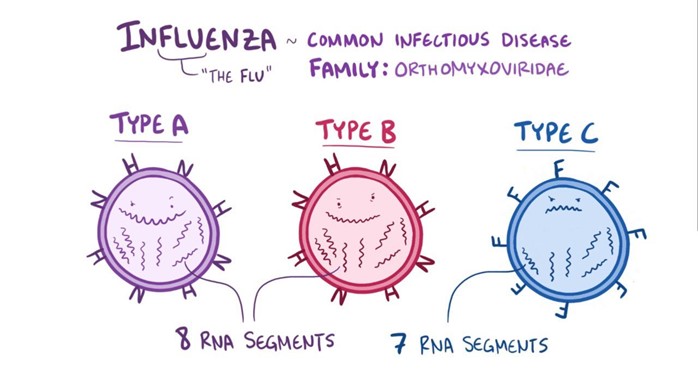The hospital's Emergency Operations Committee is working on their disaster plan. In which components should nurses be included? SELECT ALL THAT APPLY
Nurses performing duties outside of the nurses' typical job description
A plan for comprehensive practice drills
Identification of resources to meet anticipated needs for food, water, and supplies
An internal and external communication plan
Discharge all surgical clients who are one day or more post-op
Correct Answer : A,B,C,D
Choice A reason: Nurses performing duties outside of the nurses' typical job description is a component that should include nurses. In a disaster situation, nurses may have to assume roles and responsibilities that are beyond their usual scope of practice, such as triage, first aid, or mass casualty management. Nurses should be trained and prepared to perform these duties safely and effectively.
Choice B reason: A plan for comprehensive practice drills is a component that should include nurses. Practice drills are essential for testing and improving the disaster plan, as well as enhancing the skills and confidence of the staff. Nurses should participate in regular and realistic drills that simulate different types of disasters and scenarios.
Choice C reason: Identification of resources to meet anticipated needs for food, water, and supplies is a component that should include nurses. In a disaster situation, the demand for resources may exceed the supply, and the availability of resources may be disrupted or limited. Nurses should be involved in identifying and prioritizing the essential resources that are needed to provide care and support to the clients and staff.
Choice D reason: An internal and external communication plan is a component that should include nurses. In a disaster situation, communication is vital for coordinating actions, sharing information, and providing updates. Nurses should be aware of the communication channels and protocols that are used within and outside the hospital, such as radios, phones, or social media.
Choice E reason: Discharge all surgical clients who are one day or more post-op is not a component that should include nurses. This is not a realistic or appropriate strategy for reducing the hospital's occupancy or workload in a disaster situation. Discharging surgical clients who are still recovering may compromise their health outcomes and increase their risk of complications or readmission.
Nursing Test Bank
Naxlex Comprehensive Predictor Exams
Related Questions
Correct Answer is B
Explanation
Choice A reason: Discipline in the school setting for improper handwashing is not an appropriate action by the nurse, as it may not prevent the spread of influenza or promote healthy behaviors. Influenza is a viral infection that affects the respiratory system and can be transmitted by direct or indirect contact with respiratory droplets from an infected person. Handwashing is one of the most effective ways to prevent the transmission of influenza and other infectious diseases, but it requires proper technique, frequency, and duration. The nurse should not punish or blame the students for their handwashing habits but rather educate and encourage them to wash their hands with soap and water for at least 20 seconds, especially before and after eating, after using the bathroom, after coughing or sneezing, and after touching potentially contaminated surfaces.
Choice B reason: Education regarding respiratory and hand hygiene is an appropriate action by the nurse, as it helps to prevent the spread of influenza and promote healthy behaviors. The nurse should provide accurate and relevant information to the students, staff, and parents about the causes, symptoms, prevention, and treatment of influenza. The nurse should also teach and demonstrate proper respiratory and hand hygiene practices, such as covering the mouth and nose with a tissue or elbow when coughing or sneezing, disposing of used tissues in a trash can, washing hands frequently with soap and water or using alcohol-based hand sanitizer, avoiding touching the eyes, nose, and mouth, and staying away from sick people.
Choice C reason: Running a mandatory flu clinic is not an appropriate action by the nurse, as it may not be feasible, ethical, or effective in preventing influenza. Influenza vaccination is one of the best ways to prevent influenza and its complications, but it requires informed consent, adequate supply, trained personnel, and appropriate timing. The nurse cannot force or coerce anyone to receive the flu vaccine without their permission or against their wishes. The nurse should respect the autonomy and preferences of the students, staff, and parents, and provide them with evidence-based information about the benefits and risks of influenza vaccination. The nurse should also collaborate with the health department and other community partners to organize voluntary flu clinics that are accessible, affordable, and convenient for those who want to receive the vaccine.
Choice D reason: Closing the school for 6 weeks is not an appropriate action by the nurse, as it may not be necessary, practical, or beneficial in preventing influenza. Influenza outbreaks can vary in severity, duration, and impact depending on several factors, such as the strain of the virus, the level of immunity in the population, the availability of vaccines and antiviral medications, and the implementation of preventive measures. The nurse should monitor the situation closely and follow the guidance of the health authorities regarding school closure decisions. The nurse should also consider the potential consequences of school closure on the student's education, socialization, nutrition, safety, and mental health. The nurse should weigh the benefits and harms of school closure against other alternatives, such as increasing ventilation, cleaning and disinfecting surfaces, screening for symptoms, isolating sick students or staff members, reducing class size or mixing groups.

Correct Answer is B
Explanation
Choice A reason: Plantar flexion is the movement of the foot that points the toes downward. It is not a test for gait, but rather a test for muscle strength and nerve function in the lower leg.
Choice B reason: Romberg is a test for balance and coordination that involves asking the client to stand with their feet together and arms at their sides, first with their eyes open and then with their eyes closed. If the client sways or falls when their eyes are closed, it indicates a problem with their proprioception, which is the sense of position and movement of the body. Ataxia is a condition that affects proprioception and causes impaired gait, so Romberg is an appropriate test for it.
Choice C reason: Achilles reflex is the contraction of the calf muscle when the Achilles tendon is tapped. It is not a test for gait, but rather a test for spinal cord function and nerve damage in the lower leg.
Choice D reason: Patellar reflex is the extension of the lower leg when the patellar tendon is tapped. It is not a test for gait, but rather a test for spinal cord function and nerve damage in the upper leg.

Whether you are a student looking to ace your exams or a practicing nurse seeking to enhance your expertise , our nursing education contents will empower you with the confidence and competence to make a difference in the lives of patients and become a respected leader in the healthcare field.
Visit Naxlex, invest in your future and unlock endless possibilities with our unparalleled nursing education contents today
Report Wrong Answer on the Current Question
Do you disagree with the answer? If yes, what is your expected answer? Explain.
Kindly be descriptive with the issue you are facing.
